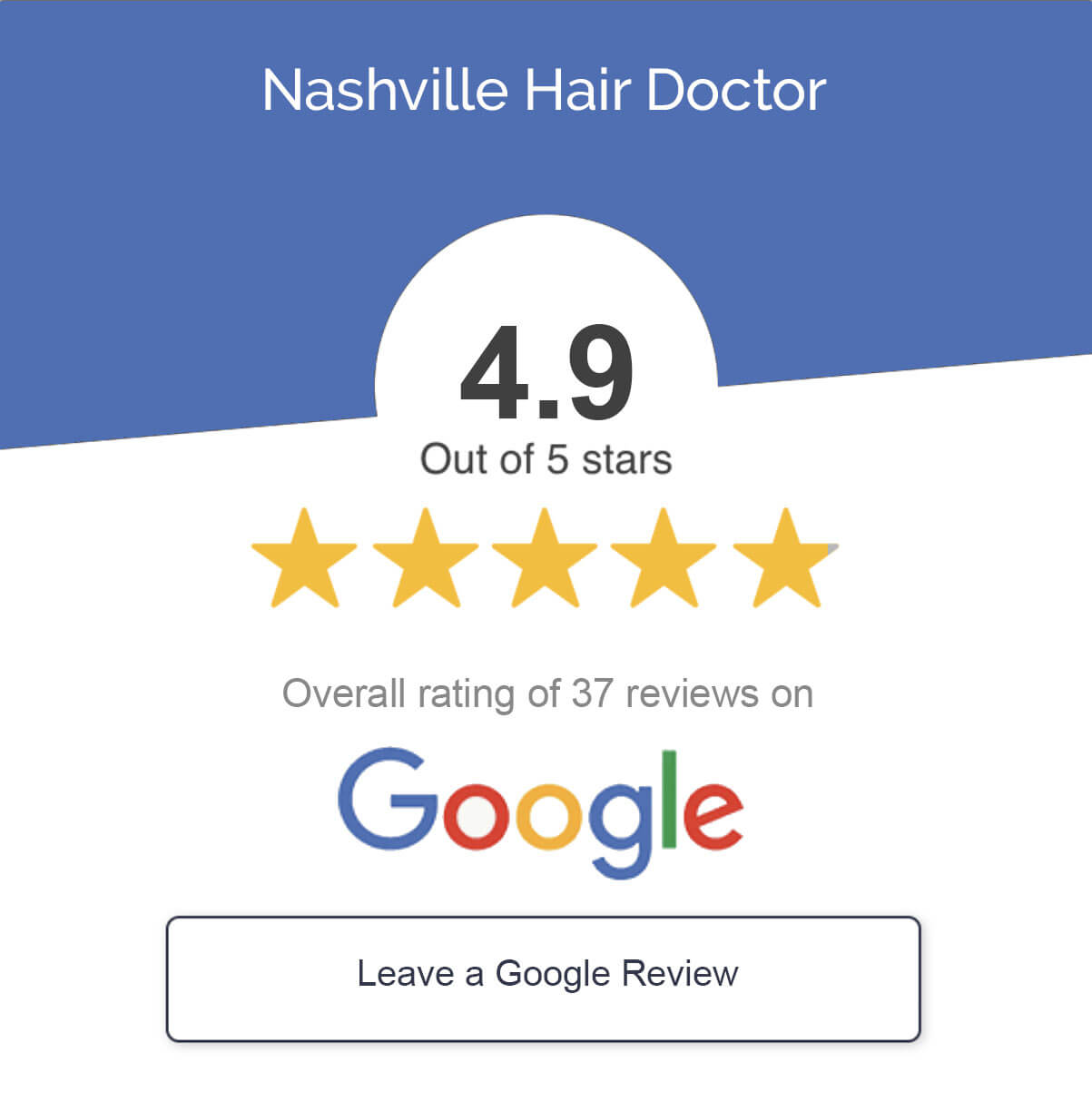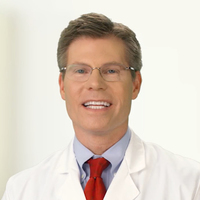
Medically reviewed by Dr. John Rosdeutscher – Written by Sine Thieme
In most ways, beard transplants are just like hair transplants. At Nashville Hair Doctor, we use the NeoGraft method of Follicular Unit Extraction (FUE) for all hair restoration, whether it is for the scalp or for facial hair. In both cases, hair is extracted one graft at a time from the donor-rich area at the back (and sometimes sides) of the head.
The difference between hair and beard transplants, of course, lies in the area where these grafts are then implanted to promote growth– even though the implantation method stays the same.
In this article we will explore the different areas for beard transplants and how many grafts you can estimate for each area.
Can Facial Hair Grow Where it Hasn’t Grown Before?
One obvious difference between hair and beard transplants is that hair transplants to the scalp are intended to regrow hair in thinning or balding areas. Think of a receding hairline or a growing bald spot in your crown. Most patients used to have hair in those areas and want to use hair restoration to regain the fuller hair of their younger years.
Beard transplant patients typically have a different motivation than regrowing thinning hair. They are often younger, in their early or mid-twenties perhaps, and have struggled with growing a beard. Or they may be mature in age but have always had a patchy, uneven beard that they’d like to make more symmetrical and fuller.
This means that there often has not been any hair growth at all in the areas that a patient wants to target with a beard transplant. So it is understandable if you wonder if it’s possible for hair to grow where it has never grown before!
The answer is yes, it is possible. Whether a hair follicle produces growth or not does not depend on where it is transplanted to. What matters is where it is transplanted from. The hair that is used in hair restoration procedures is typically taken from the back of the scalp. Follicles in this area tend to be resistant to hair loss (due to their resistance to the hormone DHT). No matter where you transplant this hair to, it will grow.
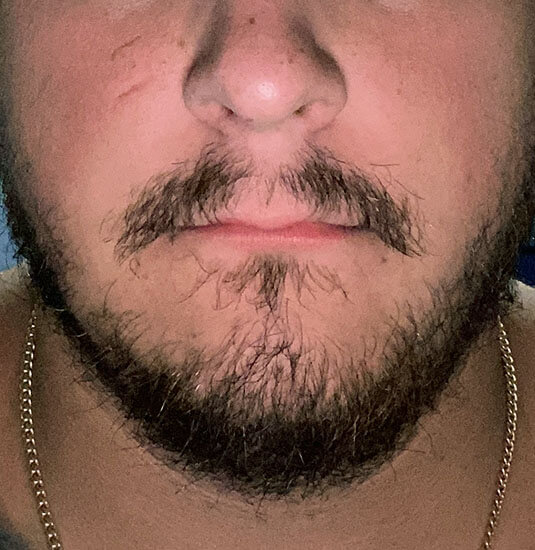
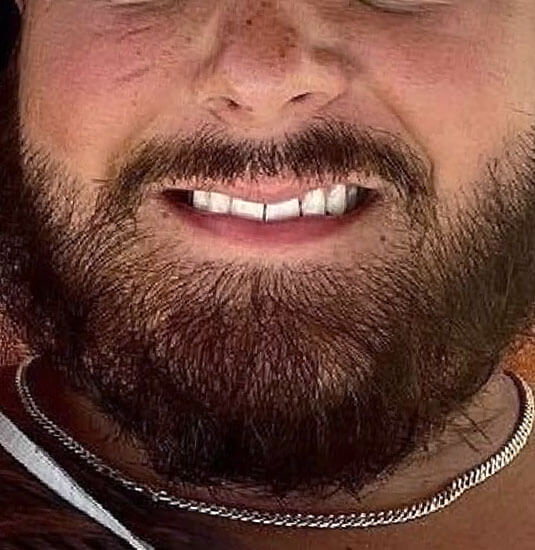
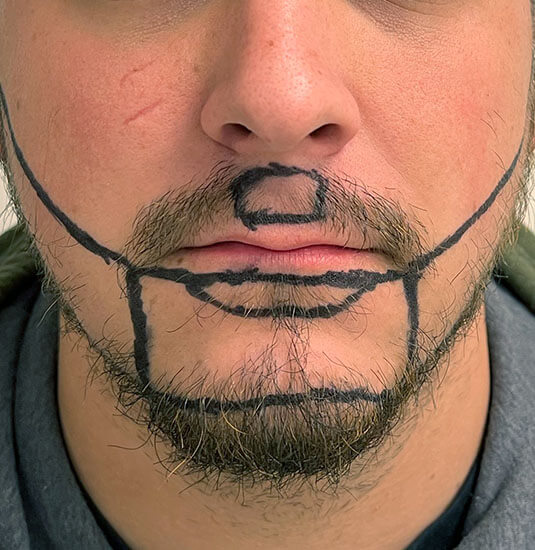

Does a Beard Transplant Work in Areas of Scarring, Burning, or Prior Laser Hair Removal?
The answer, again, is yes. Because the ability of a hair follicle to grow is determined by its origin and whether it is from a DHT-resistant area, it will grow in its new area, even if this area has been “damaged” in any way. Of course not every single transplanted follicle “takes” to its new location. There is always a certain rate of follicles that do not make it. This is called the transection rate. But experienced hair restoration specialists such as the Nashville Hair Doctor NeoGraft Master Techs are able to achieve a low transection rate by carefully choosing and placing the donor hair.
A patient might have previous acne scars, burn marks, or even prior laser hair removal, and he could still grow transplanted hair in those areas. For instance, beard transplants are a great option for patients who’ve undergone harelip surgery and would like to disguise the resulting scar.
Popular Areas for a Beard Transplant
When you design your beard, almost anything is possible. You might go for a mustache, a goatee, sideburns, cheek beard, or all of it combined in a full beard. Below we list each of these areas and the typical number of hair grafts needed to fill them. (Also scroll to the bottom to see estimated beard transplant price by area.)
Mustache
350-500 grafts
Full goatee
600-800 grafts
Sideburn
200-250 grafts/side
Cheek beard
500-1,000 grafts/side
Please note that the number of grafts needed can be very different from person to person depending on choice of design, pre-existing hair growth, and donor hair supply. One beard transplant is typically sufficient, but if a patient wants extremely thick density, a second round of restoration may be needed.
When we say almost anything is possible in terms of beard design, we need to issue one qualification: Your donor hair is limited. If you use your donor hair for facial growth in your younger years when you don’t yet know if or when you’ll be susceptible to balding, you may have regrets later when this hair is no longer available to be used to fill in your hairline or crown. So we would advise to be conservative with your beard design and not go overboard. Learn more about this in our Guide for Younger Patients: Stages of Beard Growth.
Hair grafts used in FUE hair transplantation can contain anywhere from 1-4 hair follicles. Grafts of 1-2 hairs are typically used for the hairline where they’re highly visible, and grafts of 3-4 are typically used to fill in larger areas. For beard transplants we use mostly 1 follicle grafts, and we take care to consider the correct angle and direction of hair growth when placing them.
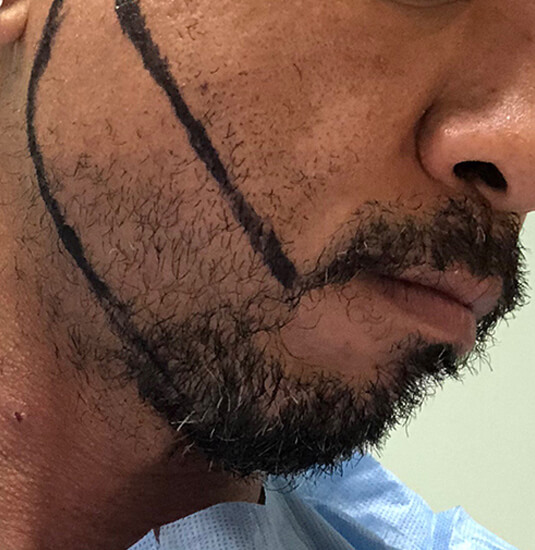
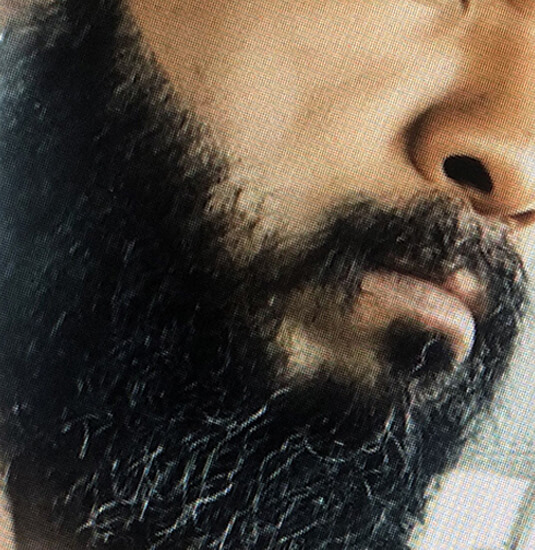
Beard Transplant Estimate by Area
| Type of Beard | Grafts per Side | Total Grafts | Estimated Total Price |
|---|---|---|---|
| Mustache | — | 300-500 | $1,800 – $3,000 |
| Full Goatee | — | 600-800 | $3,600 – $4,800 |
| Sideburn | 200-250 | 400-500 | $2,400- $3,000 |
| Cheek Beard | 500-1,000 | 1000-2000 | $6,000 – $9,500 |
| Full Beard | — | 2,000 – 2,500 | $9,500 – $11,250 |
*Estimates only. Please also refer to our current beard transplant price chart or request a free personalized quote and treatment plan.
